Exploring the Best Tarot Card: Personal Interpretations
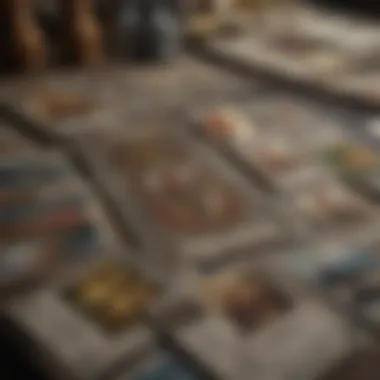
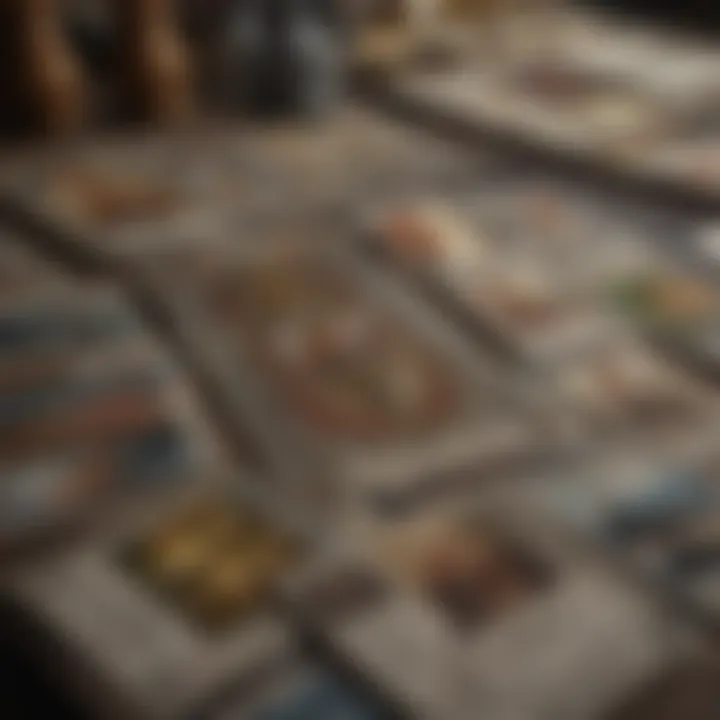
Intro
In the realm of tarot, debate persists about which card holds the title of the 'best.' This notion is inherently subjective, intertwining personal experiences and interpretations with the rich history of tarot. Each card embodies unique meanings, resonating with distinct aspects of life, thus inviting individuals to reflect and connect with their journey. This article aims to dissect the various facets of tarot, encouraging a deeper understanding among practitioners, astrologers, and esoteric enthusiasts alike.
Understanding the Zodiac
The zodiac offers a lens through which many tarot readers find additional meaning and context in their readings. Understanding the twelve signs and their influence can enhance the interpretation of tarot cards.
Overview of Zodiac Signs
The zodiac consists of twelve signs, each representing different energies and archetypes. These signs correlate not only to astrological positions but also to emotional and psychological traits.
Sign Traits and Characteristics
- Aries: Courageous and ambitious
- Taurus: Dependable and practical
- Gemini: Adaptable and communicative
- Cancer: Intuitive and nurturing
- Leo: Charismatic and self-confident
- Virgo: Detail-oriented and analytical
- Libra: Harmonious and balanced
- Scorpio: Intense and mysterious
- Sagittarius: Adventurous and optimistic
- Capricorn: Disciplined and responsible
- Aquarius: Innovative and humanitarian
- Pisces: Compassionate and artistic
Elemental Qualities
Zodiac signs are grouped into four elements, enhancing their distinctive characteristics:
- Fire: Aries, Leo, Sagittarius (passionate and energetic)
- Earth: Taurus, Virgo, Capricorn (grounded and practical)
- Air: Gemini, Libra, Aquarius (intellectual and communicative)
- Water: Cancer, Scorpio, Pisces (emotional and intuitive)
Understanding these traits aids in grasping tarot's nuanced interpretations.
Ending
The exploration into tarot’s best card is complex, influenced by personal perception and contextual nuances. This understanding reinforces the value of practical insights into both tarot and astrology.
Understanding Tarot Cards
Understanding tarot cards is foundational for exploring the essence of tarot as a reflective tool. These cards serve more than just a divination purpose; they unlock deep insights into the psyche, emotions, and experiences of individuals. In this section, we delve into the historical context, structural elements, and various types of cards, enhancing our grasp of tarot’s multifaceted nature. This knowledge is essential for acknowledging how tarot cards can reflect both personal and universal themes.
History of Tarot
The history of tarot dates back to the 15th century, originating in Europe. Initially, tarot cards were used for playing games rather than divination. Over centuries, they evolved into a tool for spiritual insight. Various cultural interpretations influenced their meanings, leading to significant transformations in their applications.
The transition from gaming to esoteric practices occurred during the late 18th century. Scholars like Antoine Court de Gébelin theorized about the ancient wisdom they claimed existed in tarot. This shift laid the groundwork for the modern perception of tarot as a mystical art form, aligning with various spiritual movements.
Structure of a Tarot Deck
A standard tarot deck consists of 78 cards divided into two major sections: the Major Arcana and the Minor Arcana. The Major Arcana has 22 cards, representing significant life lessons and karmic themes. On the other hand, the Minor Arcana comprises 56 cards divided into four suits: Wands, Cups, Swords, and Pentacles, each reflecting everyday experiences and situations.
The structure of the tarot deck is crucial. It provides the framework for its usage and the narratives that emerge during readings. Each card within the deck is a device for reflection, inviting the user to explore underlying meanings and personal connections.
Types of Tarot Cards
Major Arcana
Major Arcana cards are often considered the heart of tarot, showcasing essential life themes and spiritual lessons. Their key characteristic is that they embody universal experiences applicable to many facets of life, such as love, loss, and destiny. This makes Major Arcana a compelling choice for both novice and experienced users.
Each Major Arcana card holds a unique feature, often depicting archetypes that resonate deeply with the human experience. For example, cards like The Fool and The Tower represent beginnings and endings, respectively. This duality offers advantages in readings, as they can lead to profound insights.
Minor Arcana
The Minor Arcana offers a more nuanced perspective, focusing on daily life and experiences. Comprised of four suits, each suit serves a specific role in interpreting situations and emotions. A key characteristic of Minor Arcana is its reflection of the mundane aspects of life, providing context for situations that arise in everyday scenarios.
The unique feature of Minor Arcana is its diversity, as it includes various numerical cards and court cards. While they can sometimes be overlooked compared to Major Arcana, their insights are equally valuable in creating a holistic understanding of one's situation.
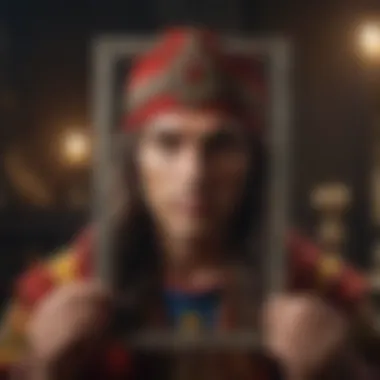
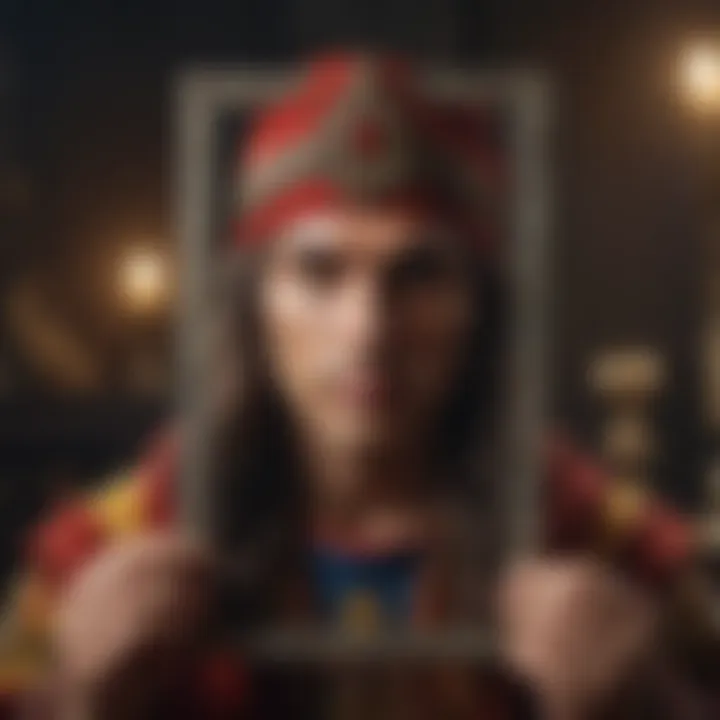
Court Cards
Court Cards consist of the Page, Knight, Queen, and King from each suit. They personify characteristics or energies that one may encounter or embody. The key aspect of Court Cards is their representation of people, relationships, and emerging qualities. This ability to vary interpretations makes court cards a beneficial choice in exploratory readings.
Their distinctive feature lies in their capability to denote a person, a situation, or even the querent themselves. Understanding these roles can enhance interpretations, though they may sometimes cause confusions due to their layered meanings.
This comprehensive overview sets the stage for our exploration into the subjective nature of tarot and the ongoing quest to identify the best tarot card. Understanding the characteristics and functions of each type served in this article as a guide to deeper insights into tarot’s reflective capabilities.
Defining the 'Best' Tarot Card
Defining the 'Best' Tarot Card involves understanding how this concept may vary among individuals. The importance of this discussion resides in its subjective nature. Each tarot card holds unique meanings and interpretations, often influenced by personal experiences, cultural backgrounds, and emotional states. This section explores these layers of significance, which help to form a broader understanding of what someone might consider the 'best' card.
Subjectivity in Card Selection
Selecting what one deems as the 'best' tarot card is largely subjective. Each individual resonates with different cards based on their experiences, beliefs, and emotional states. For example, someone going through a transformative phase might recognize The Death card as essential. Conversely, another individual facing relationship struggles may find The Lovers card more relevant.
Personal connection to a card shapes how it is perceived, leading to diverse interpretations. Furthermore, the diversity of tarot decks adds complexity to the selection process. All these factors combine to create a rich tapestry of meanings.
Understanding that this selection process relies heavily on personal interpretation allows tarot users to appreciate the depth of the practice as a reflective tool.
Common Misconceptions
One prevalent misconception about tarot is that certain cards can be strictly categorized as the 'best' or 'worst.' This notion oversimplifies the intricate nature of tarot readings.
- Equating specific cards with negative outcomes: Some believe certain cards, like The Tower or The Devil, consistently predict doom or misfortune. In truth, these cards often signal necessary change or liberation from constraints.
- Assuming universal meanings: Readers might think that all tarot cards convey the same meanings across different cultures or decks. This is not accurate. Variations often exist due to individual context.
- Overvaluing certain cards: Some cards may gain a reputation for being more potent than others. However, it is crucial to acknowledge that every card has its significance and potential lessons to impart.
"Tarot is not merely about predicting the future; it is a tool for exploration and understanding. Everyone’s journey with tarot can differ widely."
Addressing these misconceptions helps refine the understanding of tarot's nuances. Engaging with tarot allows for deeper connection and personal insights rather than a rigid framework of good and bad cards.
Popular Tarot Cards and Their Meanings
The importance of exploring popular tarot cards and their meanings cannot be understated in understanding the essence of tarot itself. Each card carries unique symbols, narratives, and implications that resonate with the human experience. These cards serve as crucial touchpoints in tarot readings, offering insight and guidance. Knowing their meanings allows readers to interpret situations more effectively and develop a stronger intuitive connection with their tarot deck.
In this section, we focus on four significant tarot cards: The Fool, The Lovers, The Magician, and The High Priestess. Each card demonstrates diverse aspects of life, emotions, and potential paths. Through this exploration, astrolgers and esotericists can enhance their readings, connecting with their clients on a deeper level.
The Fool
The Fool is often seen as the card of new beginnings. It symbolizes the start of a journey and embodies qualities like adventure, spontaneity, and openness to possibilities. When The Fool appears in a reading, it encourages one to take risks and embrace the unknown. The imagery typically portrays a young person standing at the edge of a cliff, often with a small dog, which adds to the representation of innocence and loyalty. This card invites individuals to let go of their fears and embrace the potential present in the brink of new experiences.
The Lovers
The Lovers card encapsulates themes of love, harmony, and relationship decisions. It goes beyond romantic relationships, representing choices and values that shape one's connections with others. Seeing this card suggests a union or partnership that can also indicate self-acceptance. The imagery often evolves around a couple, highlighting the balance between opposites. In various contexts, this card serves as a reminder to consider personal values and what choices resonate with one's true self.
The Magician
The Magician card represents manifestation, resourcefulness, and the power of will. It signifies that one has all the tools necessary to bring desires into reality. With symbols of the four elements—earth, air, fire, and water—this card encourages individuals to harness their skills and take initiative. When this card appears, it suggests that action, clarity, and determination are needed to achieve goals. The Magician's energy urges one to step into their power and act decisively.
The High Priestess
The High Priestess emphasizes intuition, mystery, and deeper knowledge. This card reflects inner wisdom and the connection to the subconscious mind. It often appears when it's time to trust one’s intuition and look beyond the obvious. Imagery associated with this card typically includes a woman sitting between two pillars, symbolizing balance between knowledge and mystery. This card serves as a reminder that understanding often lies beyond the surface and encourages delving deeper into one's feelings and thoughts.
"Each card unveils layers of meaning, encouraging personal reflection and growth in the context of daily life."
Cultural Influences on Tarot Interpretations
The interpretation of tarot cards is deeply entwined with cultural contexts. Each culture brings unique perspectives, beliefs, and symbolism to the practice of tarot, shaping how cards are perceived and utilized. Understanding these influences is essential for anyone working with tarot, as they enrich the readings and provide a broader view of the card meanings. This awareness allows practitioners to appreciate the depth and versatility of tarot beyond mere divination.

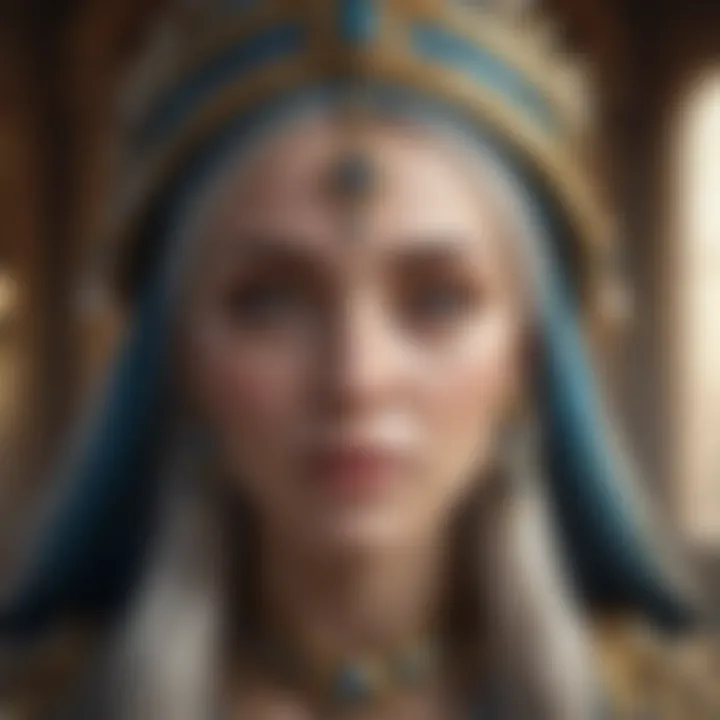
Cultural influences can dictate not only the understanding of individual cards but also the overall practice of tarot. For instance, the meanings attributed to cards like The Fool or The Wheel of Fortune can significantly alter depending on cultural narratives and historical experiences. Different societies might prioritize certain aspects of these cards based on their unique histories and values, leading to diverse interpretations. In this sense, cultural background is not just a backdrop; it acts as a lens through which tarot is understood.
Additionally, the diversity in symbolism across cultures means that practitioners should remain open-minded when considering interpretations. By recognizing and respecting these differences, one can avoid narrow readings and build a more inclusive understanding of tarot. Moreover, acknowledging cultural influences promotes richer readings and enhances relational dynamics with the cards and the querent.
Western Perspectives
In Western culture, tarot is often associated with mystical and esoteric themes. The origins of tarot in Europe date back to the 15th century, where it was initially used for playing games. However, by the late 18th century, shifts in religious thoughts and the rise of occultism began reshaping tarot into a tool for divination and self-reflection. Western interpretations of tarot often emphasize personal destiny, psychological exploration, and esoteric knowledge.
Cards such as The Hierophant and The High Priestess embody authority and intuition, respectively, resonating with Western philosophical traditions of knowledge and inner wisdom. The imagery on these cards often draws from classical mythology, astrology, and alchemy, allowing for rich layers of meaning that reflect Western esoteric beliefs.
Moreover, Western tarot emphasizes archetypes rooted in Jungian psychology. This perspective encourages practitioners to view cards as mirrors reflecting their psyche and potential paths. Such interpretations guide individuals through complex emotions and life choices, making tarot a significant psychological tool in Western cultures.
Eastern Perspectives
In contrast, Eastern interpretations of tarot often incorporate influences from various philosophical and spiritual traditions such as Buddhism, Taoism, and Hinduism. Here, tarot is less commonly associated with divination and more viewed through lenses of moral guidance and spiritual growth.
For example, cards may be interpreted through the concept of karma in Eastern philosophies. This approach suggests that every action has a consequence, and tarot readings highlight paths that lead toward personal enlightenment or away from potential suffering. Cards like The Wheel of Fortune may symbolize cyclical life and the interconnectedness of all things, resonating with Eastern spiritual concepts of existence.
In many Eastern views, tarot is utilized for meditation rather than fortune-telling. Practitioners may use cards to foster mindfulness and self-discovery, incorporating them into practices that promote inner peace. The imagery can reflect harmony and balance, aligning with broader cultural narratives emphasizing equilibrium and unity.
By examining both Western and Eastern perspectives on tarot, practitioners can expand their interpretive skills and embrace a more comprehensive understanding of tarot's reflective nature. Each viewpoint holds valuable insights that enhance the tarot experience, making it a multifaceted tool for those seeking wisdom and clarity.
Personal Experience and Intuition
Understanding how personal experience and intuition impact tarot readings is essential. These two elements create a unique connection between the reader and the cards. This connection informs interpretations, leading to a more meaningful reading. Each reader brings their history, feelings, and beliefs into the process. Thus, one card can hold various meanings depending on the person using it.
Personal experience can enhance one’s understanding of tarot. Many readers recall significant moments that resonate with specific cards. For instance, a reader might feel drawn to The Lovers when reflecting on a pivotal relationship. Such experiences can shape future interactions with that card.
Intuition also plays a critical role. Unlike rigid interpretations, intuition allows for flexibility in understanding card meanings. It encourages readers to trust their gut feelings, often leading to insights that traditional meanings might overlook. This shift from standard interpretations to personal insights can elevate the reading experience considerably.
Both elements help to create a richer narrative within the reading. Readers who embrace their intuition often find deeper connections with their decks. They engage not just with the imagery of the cards but also with the, energy that those cards evoke.
In summary, personal experiences and intuitive insights are vital components of tarot reading. They add depth and relevance, making each reading a unique journey.
Connecting with Your Deck
Establishing a strong connection with your tarot deck is crucial. This connection facilitates a more profound understanding of the cards and their meanings. Many readers begin this journey by spending time with their deck, allowing personal energy to flow into it.
To connect effectively:
- Handle the cards regularly, shuffling and drawing for practice.
- Meditate on particular cards, allowing time to contemplate their imagery and symbolism.
- Develop a journal to record impressions and insights gained from your readings.
Such practices enhance familiarity with the deck, leading to more accurate interpretations. It is essential to understand that a tarot deck is not merely a set of cards. It embodies a deeper relationship and connection.
Intuitive vs. Traditional Readings
The distinction between intuitive and traditional readings emerges from the different approaches to card interpretation. Traditional readings often rely on established meanings attributed to each card. This method emphasizes standardized interpretations that have historical context.
On the contrary, intuitive readings focus on personal interpretation. A reader may feel that a particular card resonates with their current situation in a manner that goes beyond traditional meanings. This approach fosters adaptability, allowing the reader to interpret the cards based on feelings and current events in life.
Key differences include:
- Traditional Readings: Follow fixed meanings, utilize historical context.
- Intuitive Readings: Rely on personal insights, embrace flexibility in interpretation.
Accepting both methods can enrich a tarot practice. Readers may find value in combining structured meanings with instinctive responses. Ultimately, each reader must determine which approach aligns best with their style and worldview.
Integrating Tarot into Daily Life
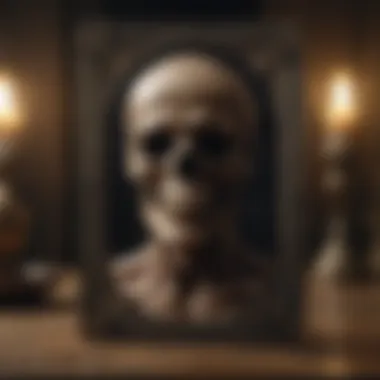

Integrating tarot into daily life allows individuals to navigate their personal journeys with clarity and intuition. This section emphasizes the importance of daily practices and reflections using tarot. Surrounded by the complexities of modern life, people often seek tools for self-reflection and guidance. Tarot serves this purpose by encouraging mindfulness and introspection. Through daily draws and decision support, tarot practitioners can enhance their understanding of personal challenges and opportunities.
Daily Draws and Reflections
Daily draws are a popular practice among tarot users. By selecting a single card each day, practitioners can focus their attention on specific themes. This way, they engage with their cards in a meaningful manner. Reflection upon these cards offers insights that may relate to ongoing life situations. Here are some ways to approach daily draws:
- Set a Routine: Choose a consistent time each day for your draw. Morning draws may set a positive tone for the day, while evening reflections can provide closure.
- Journal: Document your card, its meaning, and your intuition. Over time, patterns may emerge that connect you more deeply with your deck.
- Observe: Pay attention to how the drawn card manifests throughout your day. This can be enlightening and add depth to the experience.
Engaging in daily draws also promotes a mindset of reflection and self-awareness. Tarologists find that such practices enable them to confront challenges with a clearer mindset.
Using Tarot for Decision Making
Tarot cards can be valuable tools for decision-making processes. The act of drawing cards often encourages clarity in muddy situations. Here are important factors to consider when using tarot for this purpose:
- Certainty of Intent: Before drawing cards, be clear about the question or decision at hand. This preparation sets the stage for focused guidance.
- Choosing the Spread: Selecting an appropriate tarot spread can influence the insights gained. A simple three-card spread may suffice for straightforward questions, while a more complex layout can address intricate dilemmas.
- Understanding Reactions: It's essential to understand the emotional response to each card drawn. Consider how these emotions guide your thoughts regarding the decision.
- Validation with Intuition: Use intuition as a complement to traditional meanings of the cards. Sometimes a gut feeling clarifies a card's relevance to your situation.
Using tarot in decision making not only augments the thought process but also enhances confidence in the outcomes. It offers a way to navigate complexities with a clearer vision. Overall, integrating tarot into daily life fosters a deeper connection to self, serving as a reflective tool that enriches personal evolution.
Challenges in Tarot Interpretation
Interpreting tarot cards is not simply about reading the images and meanings; it encompasses a spectrum of intricacies that can significantly impact a reader's experience and outcomes. Engaging with tarot requires a careful balance of knowledge and intuition. This section examines the specific challenges faced by both novice and experienced practitioners, providing understanding of the potential pitfalls in tarot interpretation.
Over-Reliance on Specific Cards
A common challenge in tarot reading is the over-reliance on specific cards. This can often skew a reader's perception and interpretation. For instance, when a reader encounters a particular card frequently, like The Lovers, it can create an expectation that clouds the overall reading. This card, while rich in meaning pertaining to love and choices, may become limited in scope if the reader clings to it without considering other surrounding cards in play.
- Limitation of Perspective: Relying too much on a signature card can inhibit the flexibility of interpretation.
- Misreading Context: Understanding the position of a card in relation to others is vital. For example, The Tower, often seen as negative, can signal sudden change but can bear positive implications depending on its surrounding cards.
"Every tarot card holds a story, not just the one you gravitate to."
Tarot interpretations are inherently fluid and rely on interconnected meanings. The narrative created by a deck unfolds based on the intricate relationships between different cards during a reading. Therefore, a strong affinity for one card can restrict the reader’s comprehension of broader messages.
Biases in Card Selection
Biases in card selection present another layer of challenge in tarot interpretation. It is natural for readers to develop preferences based on their experiences or personal philosophies. However, such preferred biases can hinder a balanced approach.
- Subjective Interpretation: A card like The Sun, often associated with positivity, might evoke personal joy for one reader. However, another reader may associate it with pressure to perform, thus interpreting the card through a lens of anxiety.
- Influencing Outcomes: When biases come into play, readers may unconsciously select or emphasize cards that align with their preferred outcomes, disregarding essential nuances that other cards may offer.
Bias in card selection affects both the reader's and the querent's understanding, potentially leading to missed insights. It is crucial for tarot practitioners to practice mindfulness in their selection process, acknowledging personal preferences while remaining open to the rich variety of meanings in every card.
The Evolving Nature of Tarot
The nature of Tarot is constantly changing. This evolution is significant for anyone involved in tarot reading or study. Historically, tarot cards served various purposes, from gaming to divination. As society transformed, so did the interpretations and uses of the cards. Therefore, understanding this evolution is essential for modern practitioners. Today, tarot is not just a tool for fortune telling; it embodies a broader philosophical and psychological tool for personal growth and self-reflection.
It's crucial to recognize how the interpretations have branched out in recent years. Many new decks arrive on the market, incorporating diverse perspectives and cultural symbols. These modern interpretations provide alternative meanings that appeal to a wider audience. As more individuals explore tarot, personal interpretations gain importance. Readers can connect with cards that resonate with their experiences or beliefs.
This evolving dynamic illustrates several benefits. Firstly, it allows for updated relevance to contemporary issues and contexts. A card like The Tower, traditionally seen as negative, might resonate differently for someone encountering profound change in their life. Recognizing shifts in understanding encourages tarot enthusiasts to develop their unique practices, which can lead to more profound insights. Therefore, the evolving nature of tarot is not merely an academic curiosity; it also enhances the practice itself.
"The beauty of Tarot lies in its capacity to adapt to the changing energies of our world."
Another consideration is the impact that the evolving nature of tarot has on community practices. Online forums and discussions, such as those on Reddit, often reflect diverse opinions. This exchange of thoughts leads to richer, more profound insights into card meanings and uses. The collective sharing of personal experiences can redefine what is understood as the 'best' tarot card.
Modern Interpretations
Modern interpretations of tarot are influenced by cultural shifts and individual experiences. Unlike traditional decks, contemporary ones often combine various artistic styles and cultural motifs. For example, decks like the Wild Unknown Tarot incorporate minimalist visuals with profound meanings. This blend can make tarot accessible and intriguing for newcomers. Many new readers find they resonate more with these modern decks, reflecting their worldview and lifestyle.
Moreover, today's readers might focus on psychological themes, integrating concepts from Jungian psychology. This approach emphasizes self-discovery and inner growth through the symbolism of the cards. As such, The Empress might be seen not just as fertility and motherhood but also as nurturing one's creativity. This nuanced perspective on the cards' meanings adds layers to the reading process, inviting deeper self-reflection.
Influence of Technology
Technology is reshaping tarot practices in unexpected ways. Digital platforms enable a wider reach for tarot reading and communities. Tarot apps, online readings, and social media discussions make it easier to connect with others. Through platforms like Facebook and Instagram, readers can share their insights, interpretations, and experiences.
Additionally, many tarot readers turn to online courses and webinars to improve their skills. This access to knowledge democratizes the learning process, allowing anyone interested to delve into tarot's depths. Furthermore, technology enables unique formats, such as virtual readings, expanding the traditional in-person setup.
However, with these changes come considerations. The risk of over-simplification exists. With the rise of quick app readings, some might overlook the depth and nuance of tarot. A thorough understanding requires more than just digital quick fixes. Readers should remain grounded in the core principles of tarot, even while embracing modern tools.







